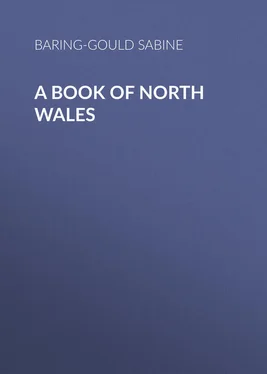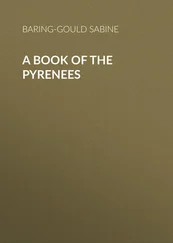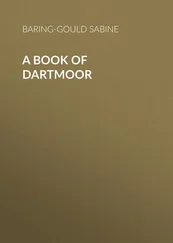Sabine Baring-Gould - A Book of North Wales
Здесь есть возможность читать онлайн «Sabine Baring-Gould - A Book of North Wales» — ознакомительный отрывок электронной книги совершенно бесплатно, а после прочтения отрывка купить полную версию. В некоторых случаях можно слушать аудио, скачать через торрент в формате fb2 и присутствует краткое содержание. Жанр: foreign_antique, foreign_prose, на английском языке. Описание произведения, (предисловие) а так же отзывы посетителей доступны на портале библиотеки ЛибКат.
- Название:A Book of North Wales
- Автор:
- Жанр:
- Год:неизвестен
- ISBN:нет данных
- Рейтинг книги:4 / 5. Голосов: 1
-
Избранное:Добавить в избранное
- Отзывы:
-
Ваша оценка:
- 80
- 1
- 2
- 3
- 4
- 5
A Book of North Wales: краткое содержание, описание и аннотация
Предлагаем к чтению аннотацию, описание, краткое содержание или предисловие (зависит от того, что написал сам автор книги «A Book of North Wales»). Если вы не нашли необходимую информацию о книге — напишите в комментариях, мы постараемся отыскать её.
A Book of North Wales — читать онлайн ознакомительный отрывок
Ниже представлен текст книги, разбитый по страницам. Система сохранения места последней прочитанной страницы, позволяет с удобством читать онлайн бесплатно книгу «A Book of North Wales», без необходимости каждый раз заново искать на чём Вы остановились. Поставьте закладку, и сможете в любой момент перейти на страницу, на которой закончили чтение.
Интервал:
Закладка:
In the church by the shrine is preserved a bust, not ill carved, of a female wearing a crown. It is possible that this may have been intended as the head of S. Edwen, patroness of the daughter parish. She is said to have been a daughter or niece of Edwin, king of Northumbria, who, as has been already related, spent his youth in Anglesey.
From Bangor the train may be taken to Llanfair, and thence it is a walk to Penmynydd, where is the Plas, the cradle of the House of Tudor.
The handsome Owen Tudor caught the fancy of Catherine, widow of Henry V.; but before she would marry this Welsh knight she sent a deputation to his ancestral home to inquire into the respectability of his family, its antiquity, and its dignity.
The commissioners arrived at the little mansion and found Owen’s mother shelling peas, and surrounded by goats, to which she cast the pods, and pigeons that pounced on the peas that escaped her fingers. As to the pedigree, that was soon disposed of; the old lady could recite the Aps back to Anna, the cousin of the Virgin Mary, an Egyptian princess. The deputation returned with its report, pulling long faces. The Tudors were petty Anglesey squires and nothing more, not largely estated, nor with a great retinue. But Queen Catherine was very much in love and very eager to lay aside her widow’s weeds. “Make the most of the pedigree,” she said, “but cook the rest of the report; write down the goats as serving-men and the pigeons as ladies-in-waiting.”
They did so. The King’s Council was satisfied, and Catherine married Owen, and became, by him, the mother of Edmund “of Hadham,” who was created Earl of Richmond by Henry VI. in 1453.
His son, Edmund Tudor, married Margaret, daughter of John Beaufort, Duke of Somerset, and great-granddaughter of “old John of Gaunt, time-honoured Lancaster,” and so became the father of Henry VII.
Queen Catherine died in 1437, leaving, beside Edmund, a son Jasper, and another Owen, who embraced a monastic life and died early.
As soon as the queen was dead bad times ensued for Owen. The marriage had been winked at, but not relished, and he was seized and committed to Newgate, and the three sons were given into the custody of the Abbess of Barking.
Aided by his chaplain and a servant, Owen effected his escape, but he was retaken and delivered to the Earl of Suffolk to be kept in Wallingford Castle; but he was transferred to Newgate. He made his escape a second time.
In the year 1453 his sons were both made earls – Edmund was created Earl of Richmond and Jasper Earl of Pembroke. Owen had an illegitimate son, named David, who was knighted by his nephew, Henry VII.
Owen remained unnoticed till 1459, when his own son Jasper graciously conferred knighthood on him. Henry VI. granted him some lands and a revenue, but a law was passed that henceforth no commoner, under severe penalties, should presume to marry a queen dowager of England without special licence from the king.
In 1461 he fought under the banner of his son Jasper at the battle of Mortimer’s Cross, and would not quit the field, but was taken with several other Welsh gentlemen, and was beheaded soon after at Hereford.
Jones, in his Relicks of the Welsh Bards , 1794, gives a duet which purports to be translated from the Welsh, and which is based on the wooing of Owen Tudor and Catherine. He does not give the original Welsh. The air as well as the words has a very modern smack.
The duet begins: —
“ Owen. I salute thee, sweet Princess, with title of grace,
For Cupid commands me in heart to embrace
Thy honours, thy virtues, thy favour, thy beauty,
With all my true service, my love, and my duty.
Catherine. Courteous, kind gentleman, let me request,
How comes it that Cupid hath wounded thy breast?
And chanc’d thy heart’s liking my servant to prove,
That am but a stranger to this, thy kind love?”
And it all winds up with their saying together: —
“Then mark how the notes of our merry town bells,
Our ding-dong of pleasure most cheerfully tells.
Then ding-dong, fair ladies, and ladies all true,
This ding-dong of pleasure may satisfy you.”
Actually it would seem that the spooning was on the side of the Queen and not of Owen.
The house of Penmynydd dates from 1370, and is consequently the same as that visited by the commission. The kitchen is intact, and the Tudor arms are carved about the building, and there still is the courtyard in which the ancestress of King Edward VII. sat shelling peas into a bowl when the deputation arrived.
Wales is supposed to have provided a grandmother to queens Mary and Anne, a pot-girl, who married the brewer whose tubs she scoured, so soon as his wife died. But the story is as apocryphal as that of the smuggling into the palace of James II. of a surreptitious Prince of Wales in a warming-pan.
The Protestant party got up this latter scandalous fable, and Mary of Modena and the Roman Catholic faction retaliated with the tale of the Welsh pot-girl.
The story was this. It was confidently asserted that the wife of the celebrated Lord Clarendon was a bare-footed Welsh lass who had gone to London for service and found employment as a “tub-woman” to a brewer and publican there, who subsequently married her, and on his death bequeathed to her a large fortune. As the succession was disputed by his relations, she sought the professional assistance of the lawyer Edward Hyde, who introduced her to his family, and his son Edward married her. She became the mother of Anne, whom James Duke of York married. Her granddaughters Mary and Anne wore the crown.
But the story is contradicted by facts. Edward Hyde, who became Earl of Clarendon and High Chancellor of England, married Anne, daughter of Sir George Ayliffe, knight. Six months afterwards she died of small-pox, and childless. Then he married Frances, daughter of Sir Thomas Aylesbury, knight, and by her became the father of Mary and Anne.
Burke, in his Romance of the Aristocracy , tells the story somewhat differently. He makes the pot-girl marry Sir Thomas Aylesbury, by whom she had a daughter Frances, who married Edward Hyde.
But this story also breaks down. For it is certain that the wife of Sir Thomas Aylesbury was the daughter of Francis Denman, rector of West Retford, and widow of William Darell.
As far as can be ascertained there is not even a substratum of truth in the story.
Carnarvon lies at a little distance from the old Roman town of Segontium, or Caersaint, as the British called it. The river that flows into the sea beneath the castle walls is the Seiont, or Saint. It was here that resided Elen the Road-maker, daughter of Eudaf, chieftain of Erging and Ewyas, who married the usurper Maximus, called by the Welsh Maxen Wledig. This Roman general was raised to the purple by the legions in Britain in 383. He was by birth a Spaniard, and had acquired a reputation under the elder Theodosius in a campaign against the Picts and Scots in 368.
According to Welsh tradition he was a humane ruler, who showed favour to the native British. Unfortunately for himself and for Britain, Maximus did not content himself with recognition as king in Britain, but aspired to be emperor in Rome. He assembled a large army of native levies, prepared a fleet, crossed the Channel. His wife’s brother or cousin, Cynan Meiriadog, a ruler whose home was near S. Asaph, threw in his lot with him, and led to his assistance the flower of the youth of Britain.
Maximus established himself at Trèves, and his wife, who was a pious woman, gave up the imperial palace there to be made into a church. At Trèves she has been confounded with Helena, mother of Constantine, who never was there at all. This misconception has been made to serve as a basis for the myth of the “Holy Coat,” the seamless robe of Christ, which she is supposed to have brought from Jerusalem and to have given to the church of Trèves, where it is preserved as an inestimable relic and exposed at long intervals. Maximus was finally defeated and killed at Aquileia in 388. His followers dispersed, and Cynan Meiriadog and his young bucks never saw again their native land. “Britain,” says Gildas, “was thus robbed of her armed soldiery, of her military supplies, of her rulers, of her vigorous youth who had followed the footsteps of the above-mentioned military tyrant, and who never returned.”
Читать дальшеИнтервал:
Закладка:
Похожие книги на «A Book of North Wales»
Представляем Вашему вниманию похожие книги на «A Book of North Wales» списком для выбора. Мы отобрали схожую по названию и смыслу литературу в надежде предоставить читателям больше вариантов отыскать новые, интересные, ещё непрочитанные произведения.
Обсуждение, отзывы о книге «A Book of North Wales» и просто собственные мнения читателей. Оставьте ваши комментарии, напишите, что Вы думаете о произведении, его смысле или главных героях. Укажите что конкретно понравилось, а что нет, и почему Вы так считаете.












